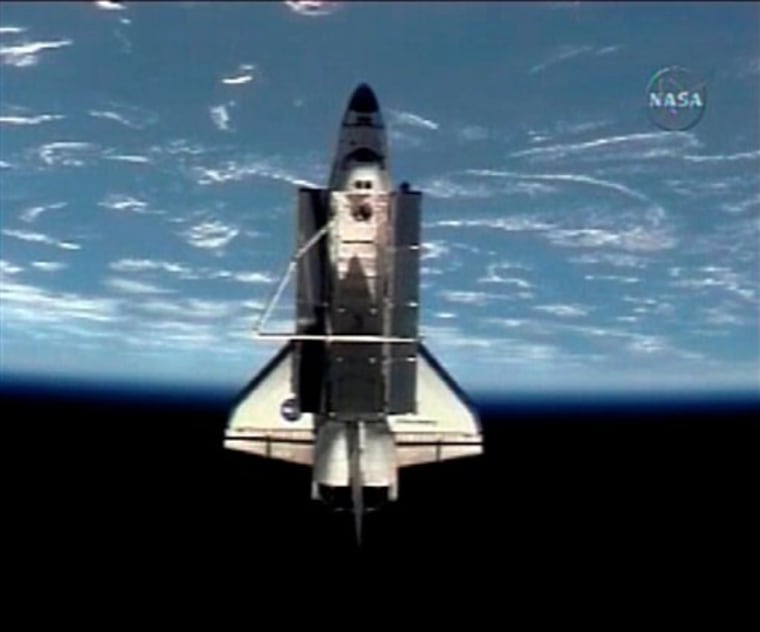Discovery’s astronauts talked sports and enjoyed the sweeping views of Earth more than 200 miles (320 kilometers) below Thursday as their flight wound down and the international space station was left farther and farther behind.
Back on Earth, engineers scoured the multitude of wing and nose images beamed down by the seven shuttle crew members Wednesday following their departure from the space station.
The analysis — to uncover any signs of damage — began as soon as the first images hit the ground and continued nonstop into Thursday afternoon. NASA expected to complete the work by early evening and, hopefully, conclude that Discovery can re-enter safely on Saturday.
With the main effort taking place on the ground, Mission Control gave commander Mark Kelly and his crew most of the day off. “The corner office would like to kindly remind you to fill out your timecards appropriately,” Mission Control joked in its morning message. The sentence ended with :-) — a smiley-face emoticon.
The astronauts took time out in the afternoon for a humorous call from ESPN Radio’s “Mike & Mike in the Morning” show.
Pilot Kenneth Ham told Mike “Greeny” Greenberg and Mike Golic that he and his crewmates tried to invent some new sports while they were at the space station. He said the possibilities are limitless — and potentially hazardous because of all the expensive equipment around them.
“However, we were tossing around a foam football the other day and learned a few things,” Ham said. In weightlessness, “everything goes high and you have to relearn how to throw just about anything.”
The hours-long survey with the 100-foot (30-meter) inspection pole typically is done the day after liftoff, to give engineers plenty of time to scour the images for any hint of launch damage to the wings and nose cap, particularly vulnerable during re-entry. Another briefer inspection usually is done after undocking, to check for any impacts from micrometeorites.
This time, everything was rolled into one.
“To my untrained eye, I personally didn’t see anything unusual,” flight director Matt Abbott said.
Discovery was so packed for its May 31 launch — Japan’s Kibo lab practically filled the payload bay — that there wasn’t room for the inspection boom. The previous shuttle crew left its inspection boom at the space station in March, and Discovery’s astronauts retrieved it as soon as they got there.
A cursory inspection relying solely on the cameras on Discovery’s robot arm, conducted June 1, revealed no problems. Photographs taken from the space station of the approaching shuttle also found nothing amiss.
NASA and Japanese space officials were delighted with the way Discovery’s mission went.
Besides installing the billion-dollar Kibo lab — the biggest and fanciest lab up there — the astronauts delivered a new pump that fixed the space station’s broken toilet, replaced an empty nitrogen gas tank and performed some detective work on a mysteriously clogged, solar wing rotating joint that has hampered energy production for months. NASA expects to replace all the bearings in the joint when the next shuttle visits in November.
“We go into every one of these missions, we plan for the worst and we hope for the best. I don’t know if it was statistics or what, but on this particular mission, we got the best,” said Kenny Todd, a space station manager.
